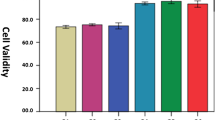Abstract
Artificial joints can replace damaged joints provided the surrounding bone is sufficiently dense. However, elderly patients generally have reduced osteoporosis-associated bone density. Therefore, restitution of bone density is essential to ensure implantation. Injectable and resorbable bioactive fillers with bone-bonding ability (osteoconductivity) are promising, as osteoporosis can be reversed with minimal invasion. Osteoconduction occurs through the surface formation of biologically active hydroxyapatite via reactions with body fluids. Heterogeneous nucleation of the hydroxyapatite is catalysed by specific surface functional groups. In addition, release of Ca2+ ions into the surrounding fluids enhances apatite nucleation by increasing its degree of supersaturation. We tested injectable bioactive filler made from cross-linked polyglutamic acid (PGA). This has many carboxyl groups that facilitate apatite nucleation. An insoluble hydrogel can be formed by cross-linkage. We exposed PGA gels to a simulated body fluid for 7 days. Trace amounts of calcium phosphate were formed, but were not identified as bone-like apatite by X-ray diffraction. However, formation of a bone-like apatite layer was detected using pre-treatment with CaCl2 solutions (>0.01 mol dm−3) dose dependently. Thus, this chemically cross-linked PGA gel could induce the heterogeneous nucleation of hydroxyapatite in a body environment, and this was enhanced by pre-treatment with CaCl2.






Similar content being viewed by others
References
K. D. KUHN, in “Bone Cements” (Springer, Berlin, 2000) p. 1
N. J. HALLAB, J. J. JACOBS and J. L. KATZ, in “Biomaterials Science” (Elsevier, London, 2004) p. 526
H.-M. KIM, J. Ceram. Soc. Japan 109 (2001) S49
T. KOKUBO, H.-M. KIM and M. KAWASHITA, Biomaterials 24 (2003) 2161
P. LI, C. OHTSUKI, T. KOKUBO, K. NAKANISHI, N. SOGA, T. NAKAMURA and T. YAMAMURO, J. Am. Ceram. Soc. 75 (1992) 2094
P. LI, C. OHTSUKI, T. KOKUBO, K. NAKANISHI, N. SOGA and K. DE GROOT, J. Biomed. Mater. Res. 28 (1994) 7
M. UCHIDA, H.-M. KIM, T. KOKUBO, S. FUJIBAYASHI and T. NAKAMURA, J. Biomed. Mater. Res. 64A (2003) 164
M. UCHIDA, H.-M. KIM, T. KOKUBO and T. NAKAMURA, J. Am. Ceram. Soc. 84 (2001) 2041
T. MIYAZAKI, H.-M. KIM, T. KOKUBO, H. KATO and T. NAKAMURA, J. Sol-gel Sci. Tech. 21 (2001) 83
T. MIYAZAKI, H.-M. KIM, T. KOKUBO, C. OHTSUKI and T. NAKAMURA, J. Ceram. Soc. Japan 109 (2001) 934
M. TANAHASHI and T. MATSUDA, J. Biomed. Mater. Res. 34 (1997) 305
C. OHTSUKI, T. KOKUBO and T. YAMAMURO, J. Non-Cryst. Solids 143 (1992) 84
D. GONZALES, K. FAN and M. SEVOIAN, J. Polym. Sci.: A Polym. Chem. 34 (1996) 2019
M. KUNIOKA, Appl. Microbiol. Biotech. 47 (1997) 469
R. FUJISAWA, Y. WADA, Y. NODASAKA and Y. KUBOKI, Biochim. Biophys. Acta. 1292 (1996) 53
T. KOKUBO, H. KUSHITANI, S. SAKKA, T. KITSUGI and T. YAMAMURO, J. Biomed. Mater. Res. 24 (1990) 721
S. B. CHO, K. NAKANISHI, T. KOKUBO, N. SOGA, C. OHTSUKI, T. NAKAMURA, T. KITSUGI and T. YAMAMURO, J. Am. Ceram. Soc. 78 (1995) 1769
T. KOKUBO and H. TAKADAMA, Biomaterials 27 (2006) 2907
M. KUNIOKA and K. FURUSAWA, J. Appl. Polym. Sci. 65 (1997) 1889
K. SUZUKI, Y. SUZUKI, M. TANIHARA, K. OHNISHI, T. HASHIMOTO, K. ENDO and Y. NISHIMURA, J. Biomed. Mater. Res. 49 (2000) 528
C. OHTSUKI, T. KOKUBO, K. TAKATSUKA and T. YAMAMURO, J. Ceram. Soc. Japan 99 (1991) 1
H. TAKADAMA, H.-M. KIM, F. MIYAJI, T. KOKUBO and T. NAKAMURA, J. Ceram. Soc. Japan 108 (2000) 118
H. TAKADAMA, H.-M. KIM, T. KOKUBO and T. NAKAMURA, J. Biomed. Mater. Res. 57 (2001) 441
H. TAKADAMA, H.-M. KIM, T. KOKUBO and T. NAKAMURA, J. Biomed. Mater. Res. 55 (2001) 185
H. TAKADAMA, H.-M. KIM, T. KOKUBO and T. NAKAMURA, J. Am. Ceram. Soc. 85 (2002) 1933
J. R. JONES and L. L. HENCH, Curr. Opin. Solid State Mater. Sci. 7 (2003) 301
T. MIYAZAKI, C. OHTSUKI, Y. AKIOKA, M. TANIHARA, J. NAKAO, Y. SAKAGUCHI and S. KONAGAYA, J. Mater. Sci.: Mater. Med. 14 (2003) 569
A. TAKEUCHI, C. OHTSUKI, T. MIYAZAKI, M. YAMAZAKI and M. TANIHARA, J. Biomed. Mater. Res. 65A (2003) 283
Acknowledgements
The authors greatly appreciate financial support for this study by Okayama Prefecture Industrial Promotion Foundation (Okayama Challenge Project). One of the authors (T. M.) also acknowledges the support by a Grant-in-Aid for Encouragement of Young Scientists ((B)16700365), Japan Society for the Promotion of Science.
Author information
Authors and Affiliations
Corresponding author
Rights and permissions
About this article
Cite this article
Sugino, A., Miyazaki, T. & Ohtsuki, C. Apatite-forming ability of polyglutamic acid hydrogels in a body-simulating environment. J Mater Sci: Mater Med 19, 2269–2274 (2008). https://doi.org/10.1007/s10856-007-3327-8
Received:
Accepted:
Published:
Issue Date:
DOI: https://doi.org/10.1007/s10856-007-3327-8




